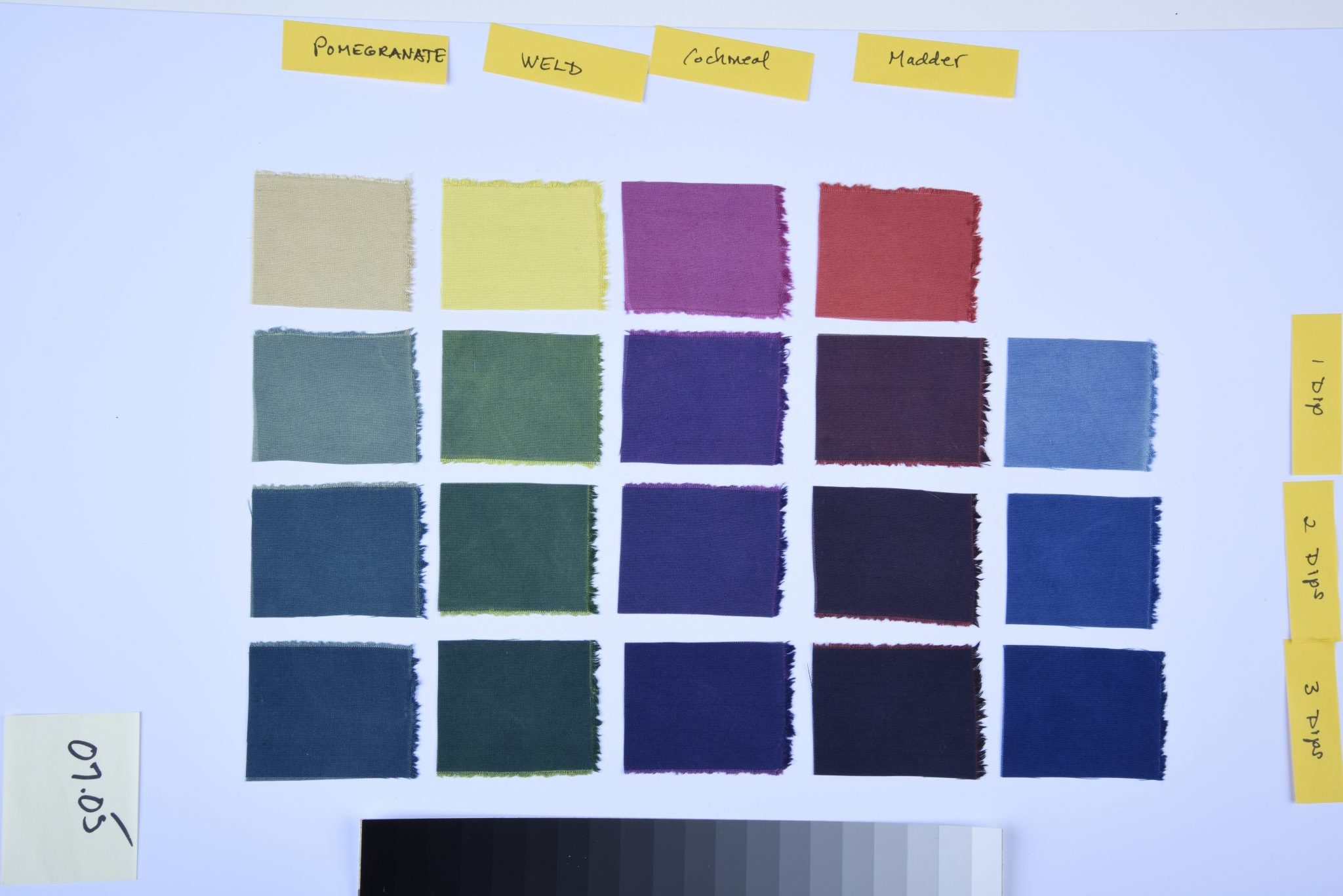This week: Botanical Colors founder Kathy Hattori with her own musings and color recipes inspired by The Art and Science of Natural Dyes by Joy Boutrup and Catharine Ellis
Every week, we are emailed with questions from our natural dye community asking simple and complex questions that we thought might be worth sharing. Of course, all of your burning questions are answered by natural dyer in chief, Kathy Hattori, Founder of Botanical Colors.
Kathy says:
I’ve been really enjoying reading The Art and Science of Natural Dyes by Joy Boutrup and Catharine Ellis. One of their chapters on indigo focuses on overdyeing, which means dyeing one color first, then dyeing a second color, resulting in a compound color. In this case, we are discussing whether to dye with a natural dye first, then dip in indigo, or to dye in indigo first and then dye with the natural dye. Do note that you get a different color depending on the sequence you choose, but dyeing with indigo first is my preferred method to achieve reproducible colors.
Getting Great Greens with Indigo + a Yellow dye
Some comments on The Art and Science of Natural Dyes (page 84 and 85) that discusses overdyeing with indigo.
We get a lot of questions on how to achieve the best greens using vatted indigo. When I first learned how to dye, I usually dipped a yellow skein in an indigo vat and got some really nice colors, but often the indigo would fade over time, or the color was really uneven and streaky and the excess yellow dye would pollute my precious vat with a murky tinge that made it difficult to read and balance.
I later learned to dye with indigo first, then mordant and overdye with a yellow shade. This resulted in a much more stable color, kept my vat “clean” for future use and still resulted in great greens. The process is to dip the unmordanted fiber into the vat to achieve the shade that you want. Oxidize and wash well. Then mordant the fiber according to the fiber type and dye the indigo-dyed fibers in the yellow dye bath.
Here are a few of our favorite green recipes.
A bright lime to grass green
Dip a light shade of indigo, mordant and then dye with 1% weld extract that has been combined with .5% soda ash and .5% calcium carbonate. You can also try our Marigold Mix at 1-2% for a lovely, bright green.
Teal
Dip a medium light shade of indigo, then dye with 3-5% pomegranate extract dissolved with .5% soda ash. Alternatively, use 5% chestnut extract as the yellow color, and you would get beautiful light teals by using 1-3% myrobalan extract as the yellow source.
Mallard Blue Green
This is a favorite color. Dip a medium dark shade of indigo, then dye with 10% fustic. At first, it doesn’t appear as if anything is happening, but then the fustic strikes and the resulting color is very rich and beautiful.
Enjoy experimenting! I’ll continue to report back on the book and its insights.

